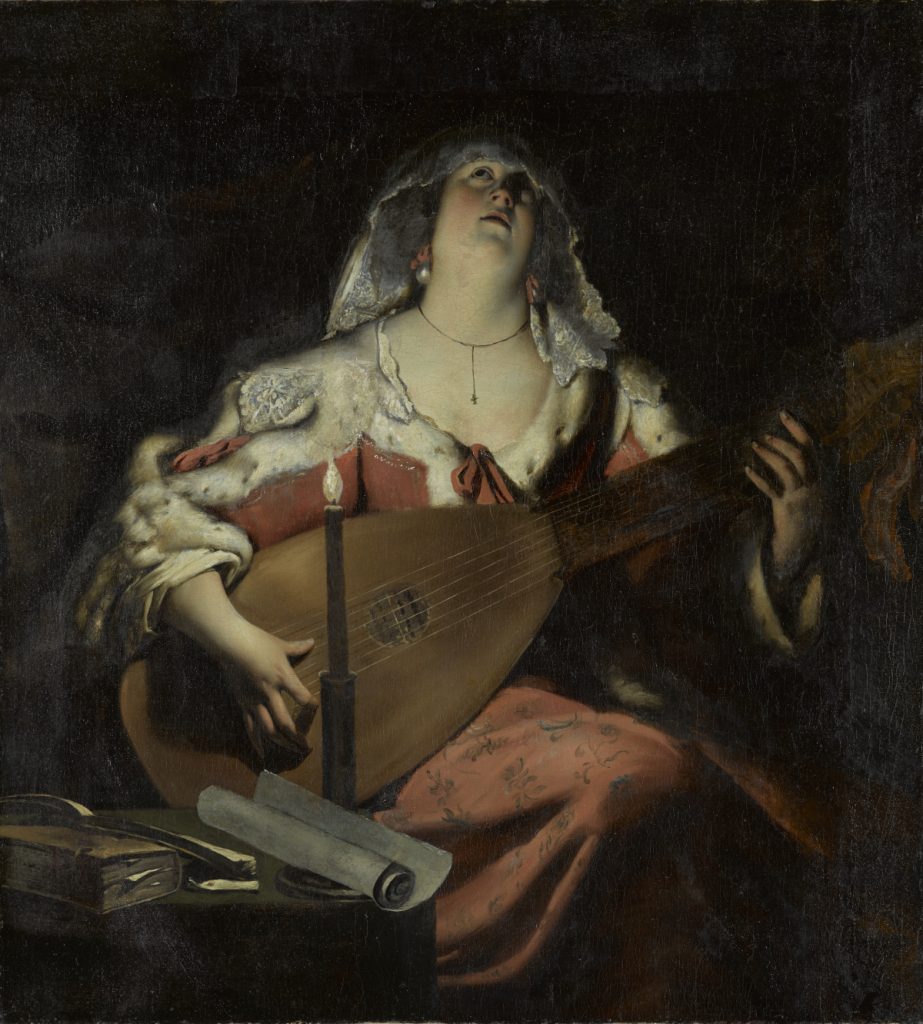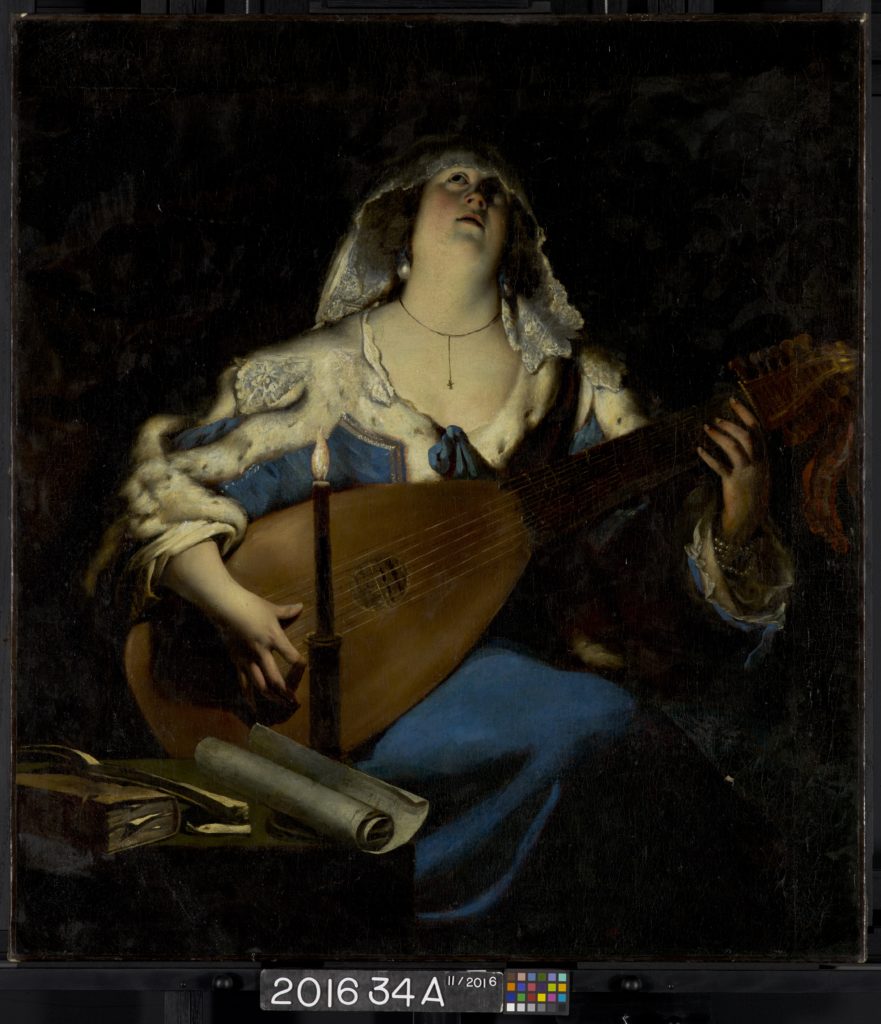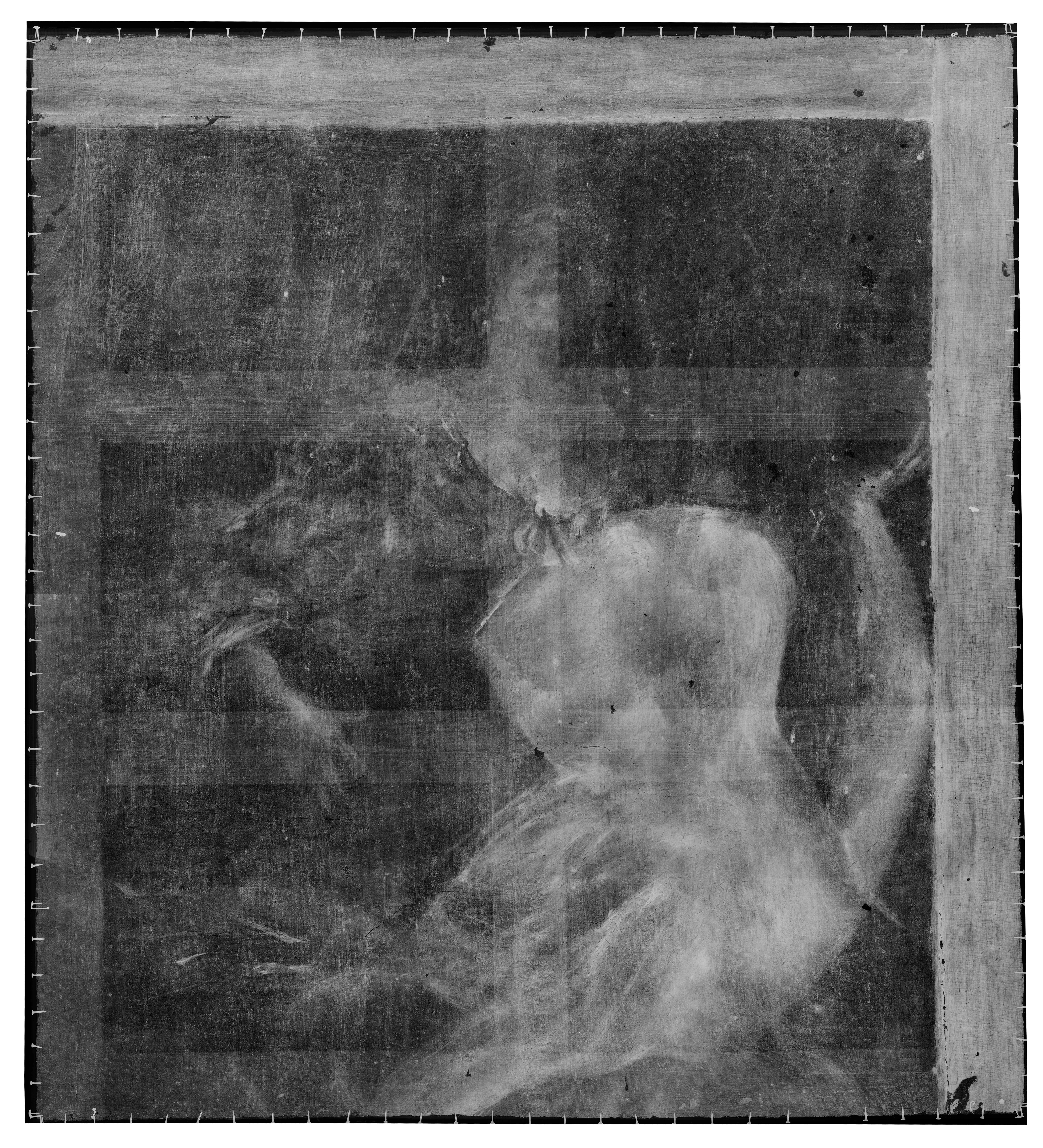The Lute Player (work of art)
Artwork Info
Key Ideas about this Work of Art
- Gerard Seghers was a Flemish painter during the baroque period. Baroque art often features dramatic motion, clear detail, and the contrast of light and dark.
- Seghers paid close attention to the use of light in this painting. He focused the work around the light of a candle to create a strong contrast between the figure and the background.
- The art technique of using contrasting lights and darks to make a subject look three-dimensional is known as chiaroscuro (key-ah-ruh-scure-oh).
- The female figure’s dress was blue when the NCMA purchased this painting. The original red dress had been repainted blue years after the original work was completed. X-ray imaging revealed that the artist created this work by painting over an existing painting of a nude woman.
- NCMA conservators restored the figure’s dress to its original red color.
Learn More
Flemish painter Gerard Seghers spent part of his artistic training in Italy studying the work of Caravaggio. Caravaggio was an artist known for his theatrical approach to light. In this work Seghers incorporated dramatic lighting by placing a single source of light (a candle) in the foreground. This created deep shadows around the figure. The artist used a technique called chiaroscuro to create contrast between the light and dark areas of the painting. This contrast brings attention to the figure’s light-toned skin, her facial expression, and the details of her clothing. The contrasting tones also make her appear to be three-dimensional.
Seghers painted this work during the baroque period. It came after the Renaissance and lasted from the late 1500s until the mid 1700s. Baroque art is characterized by dramatic motion, clear detail, and the contrast of light and dark.
When this painting was acquired by the NCMA in 2016, the figure’s dress was blue. Art conservators at the NCMA discovered that the original red dress had been painted blue long after the artist created the painting. Their analysis also revealed that the artist had reused an older painting. The Lute Player was painted over the original depiction of a seated nude figure (upside down). This is only visible with X-ray imaging. The X-ray images also revealed the remnants of a textured border along the top and right sides of the canvas. NCMA conservators used solvents and cotton swabs to clean the painting and restore the figure’s dress to its original red color.
Additional Resources
Resources for Teachers
- Read an article about baroque art and architecture.
- Learn about chiaroscuro, an art technique used in this painting.
- Watch a behind-the-scenes video of art restoration at The National Gallery in London.
Resources for Students
- Look inside the conservation lab at the NCMA.
- Try an activity to imagine what the lute player is thinking.
- Watch a video to learn how to use contrast in artwork.



